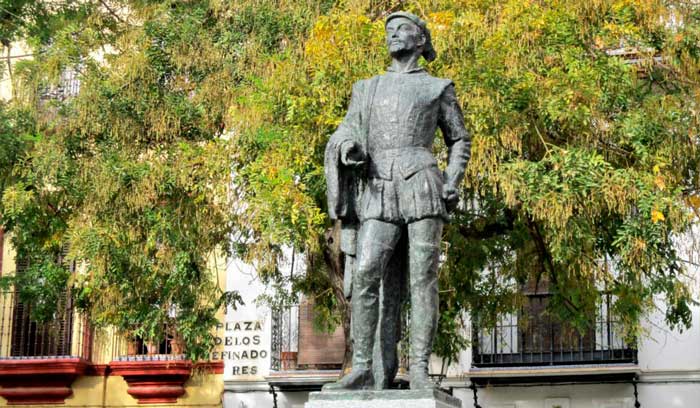
Newsletter May 2024

 What’s new?
What’s new?
This Spring semester has left us with a special feeling. We have had a very active group of students; many of them have also stayed for the entire academic year, which has allowed us to establish a very close relationship with them. This was reflected in the Farewell Reception, in which professors and students, as well as the entire office staff (although Luis, one of our interns, who had his graduation, was absent), enjoyed remembering the most exciting moments of the semester. Thank you for choosing us. We hope you visit us again and we wish you all the best in your future endeavors!

 The Spanish Corner
The Spanish Corner

“TO OVERDO IT BY THREE TOWNS” (LITERALLY TRANSLATED)
We, the Spaniards, have a reputation for exaggerating, which is why this expression is used very often. For example, a person says: “How much is it to have a dinner at this restaurant?” And the other person answers: “About 200 euros per person more or less.” Then, the first one answers: “Wow, “te has pasado tres pueblos.” In fact, it is not that expensive and to demonstrate the great exaggeration, this expression is used.
It is also used when we say things that can upset others and even hurt their feelings. When someone does not measure their words, or crosses the limit of what is politically correct, we say that “se ha pasado tres pueblos.”
 Alumni Corner
Alumni Corner

“Hi there! My name is Sadie Wolfe, a recent graduate of 4-year university, Winthrop University, in Rock Hill, South Carolina, USA. I received my Bachelor’s degree in Modern Languages with a specialization in Spanish. I’d really like to tell you about the real highlight of these 4 years in University: my time in Spain at Pablo Olavide University, in Seville, Spain from September to December, 2023!
Studying abroad was a total game-changer for me. It wasn’t just about the academics; it was a whirlwind of experiences, from late-night tapas to deep conversations with my closest friends and peers. Spain not only sharpened my Spanish speaking and comprehension, but also broadened my worldview in ways I never imagined.
Now, as I gear up to launch my career at Visa Inc., with a career in sales, I hope to eventually work with international clients, and specifically with Spanish speakers. Until then, I’m carrying those Spanish memories with me everywhere. My time in Spain wasn’t just a chapter; it’s truly become a part of who I am.
I’m ready to bring that excitement for life and new-found cross-cultural understanding to my new role! Thank you UPO for all the memories and amazing lessons I learned, in and out of the classroom.
Also, a shout out to the BEST International Center, CUI at UPO; it has the warmest and most welcoming staff. Not to mention the interns: Reyes, Meri and Luis made my experience amazing.
Thank you all!”
 Traditions and Legends
Traditions and Legends
THE SEVILLE OF DON JUAN TENORIO
Ever since Tirso de Molina wrote El burlador de Sevilla in 1630, the character of Don Juan has not ceased to fascinate us. Up to forty different versions circulated in Europe before 1900, many coming from the pens of geniuses such as Molière, Mérimée or Alexandre Dumas. In Spain, the list includes Calderón de la Barca, José de Espronceda or Campoamor, although the majority of Spaniards know the legend through José Zorrilla. In the end, the work that has had the most impact in Spain is Don Juan Tenorio, written, as we have mentioned, by the Romantic writer José Zorrilla in 1844.
In this version, the action takes place in Seville in 1545, in the last years of King Charles I of Spain. The story tells the life of Don Juan Tenorio, a man who boasts of being a seducer, of having all the women he desires in his arms. For this reason, he makes a bet with Don Luis Mejía, who was already engaged to Doña Ana de Pantoja: they want to see who is capable of conquering the most women in a year. However, when it seems that Tenorio is almost victorious, he meets Doña Inés, a novice, and everything changes. He intends to change and tries, but Don Juan’s destiny is infallible: the love tragedy typical of Romanticism prevails: all the characters finally die, including the two main lovers, Doña Inés and Don Juan.
In Seville there are many places that appear in the play and that we can find walking around the city. One of them is the Hostería del Laurel. The tradition tells us that José Zorrilla stayed in this old guesthouse in 1840 during one of his trips, serving as inspiration to set the first scenes of Don Juan Tenorio.
Not far from the Hostería del Laurel is the Plaza de la Alianza, where the house of Doña Ana de Pantoja, the future wife of Don Luis Mejía, was located. Also, the Commander of the Order, Don Gonzalo de Ulloa, Doña Inés’ father, would have his address in the Plaza de Doña Elvira. Finally, a tribute statue to the character of Don Juan could not be missed; we can admire it in the Plaza de Refinadores.
